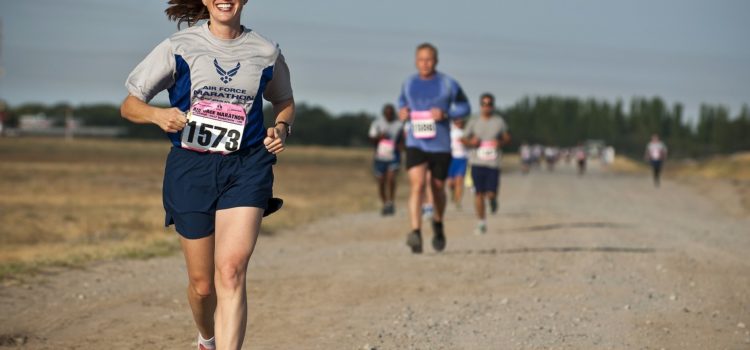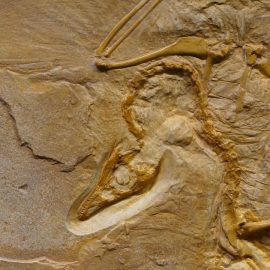

This article is an excerpt from the Shortform book guide to "The Sports Gene" by David Epstein. Shortform has the world's best summaries and analyses of books you should be reading.
Like this article? Sign up for a free trial here .
What body type is the best suited for running? Does body type have a significant effect on running ability?
There’s no single runner body type. Different leg lengths, leg proportions, and height have such an impact on performance that runners’ measurements often differ by event.
Let’s look at a few examples.
Runner Body Type
As it turns out, there is no single runner body type—depending on the type of running, runners’ body measurements differ rather significantly.
Leg Length
- Hurdlers and high jumpers with long legs have a high center of gravity. For hurdlers, this means that they are able to stretch their legs out while they run to clear the hurdle, as opposed to having to make an energy-zapping vertical leap. For high jumpers, starting with a high center of gravity means that they do not have to raise their center of mass as high in order to clear the bar.
- Sprinters have proportionally longer legs than the general population. A study found that male sprinters were on average two inches taller than the average man. But all of the height difference came from having longer legs.
- Runners in the shortest sprint events tend to have shorter legs than those in longer sprints. Shorter legs allow the runner to accelerate faster. In the shortest events, much of the race is already over by the time runners reach top speed. (This is likely the reason why NFL running backs are often shorter than other players. They spend much of their time accelerating and decelerating.)
Height
- Marathon runners tend to be shorter than other runners. Provided they have similar body types, shorter athletes have a greater surface area to volume ratio than larger ones. This allows their bodies to more effectively cool themselves during long events, and can prevent heat exhaustion. Results from marathon races add anecdotal evidence to this scientific principle. For example, Epstein notes that Paula Radcliffe, the world record holder in the women’s marathon, either did not place or could not finish the race when the temperature was above 80 degrees.
Leg Proportions
- Having narrow calves is an advantage in distance running. While running, legs are like a pendulum that swings from the hips. Weight at the end of a pendulum takes more energy to swing than weight near the fulcrum. Epstein cites one study showing that running with eight additional pounds on the hips required 4% more energy. But wearing four pounds on each ankle took 24% more energy. Adding just a tenth of a pound to each ankle increases a runner’s oxygen usage (a proxy for work) by 1%.
- This may help explain Kenyan dominance in long-distance running events. Measurements from Kenyan runners showed that their calves were on average 15-17% less thick than those of a control population. This translates to nearly a whole pound of mass per calf and saves 8% of runners’ energy each kilometer compared to their peers.
Hip Width
Female sprinters generally have very narrow hips. While the average woman has wider hips than most men, Epstein explains that female sprinters’ hips tend to be more narrow than the average mans’.
Epstein cites wide hips as a biomechanical disadvantage because it creates a greater angle from the hip to the knee. Energy that could be used for forward motion is lost to compression in the hips.
| Are Wide Hips Really a Disadvantage in Running? The idea that women are less efficient runners because of their hip width stems in part from long-standing ideas about runners’ “Q-angle.” The Q-angle refers to the angle between the quadriceps muscle and the patella. We can think of it as a measure of how well the quad lines up with the knee. A Q-angle can be made larger by having larger hips. Epstein cites wider hips as part of why female runners are more prone to injury than male runners, but this idea is contested in the literature. One study found that a larger Q angle was not associated with a higher incidence of running injury. An additional research study found that men and women of a similar height had similar Q angles and suggests that the differences seen in Q angles between men and women are explained by differences in average height rather than physiology. The idea that women’s hip width impacts their running efficiency is a long-standing and, according to a study from Harvard University, often unexamined assumption about female locomotion. The study found that hip width could not predict energy expenditure. The authors cite long-held cultural ideas about female roles in early society (staying closer to home and performing less “athletic” tasks) as a potential reason for the permanence of this idea. But these ideas are flawed. The authors note that our female ancestors likely worked just as physically hard as men and were under evolutionary pressure to be efficient athletes. |
Body Mass Index and Running Speed
In addition to leg length, height, and proportions, one study found that elite runners’ body mass index (BMI) varied predictably according to their event. The study found that athletes became lighter and smaller as race distances increased. Sprinters benefited from being taller and heavier, with some variation between athletes. In longer events, there was a more narrow range of measurements that correlated with speed, and the athletes were smaller and leaner.
Sprinters’ muscle mass allows them to apply enough force to the ground with each step so that their muscles can rebound and propel them forward. If they were to sacrifice too much mass, they would lose their power and explosive speed. In contrast, distance runners do not need to be as explosively powerful as sprinters. Being lean means that it takes less energy to propel their bodies forward. In addition, the forces of gravity and wind resistance decrease with decreased mass. Ground reaction forces are also less for lighter runners, meaning their bodies don’t have to absorb so much energy from the shock of each step, translating to less force on their joints.
While there may be performance benefits to being lean in distance running (and other sports), trying to be as lean as possible can be a detriment to both physical and mental health. Excessive calorie restriction can lead to unhealthy relationships with food, poor body image, and even problems with athletes’ metabolism, bone health, immune system function, heart health, and more. Finding the right balance for each athlete’s individual needs is more complex than a single BMI measurement can show.

———End of Preview———
Like what you just read? Read the rest of the world's best book summary and analysis of David Epstein's "The Sports Gene" at Shortform .
Here's what you'll find in our full The Sports Gene summary :
- A look at how our genes play a determining role in our success in sports
- Why practice doesn't always guarantee success
- The fortuitous gene pairings that can lead to elite athleticism






